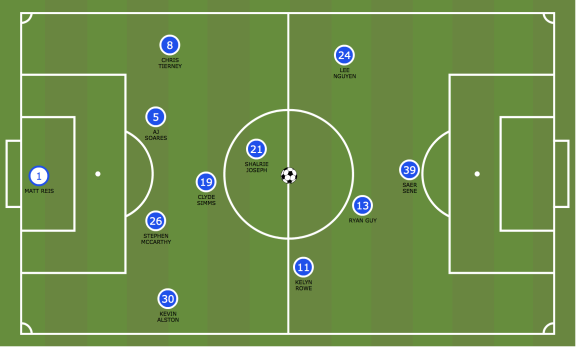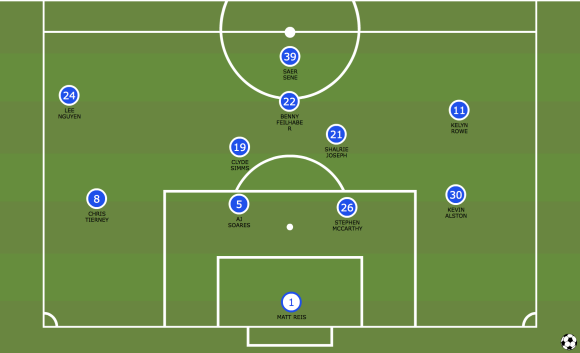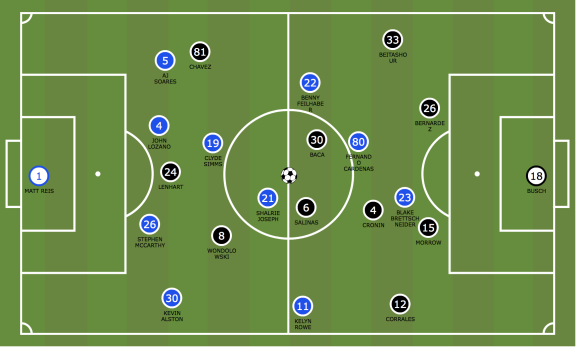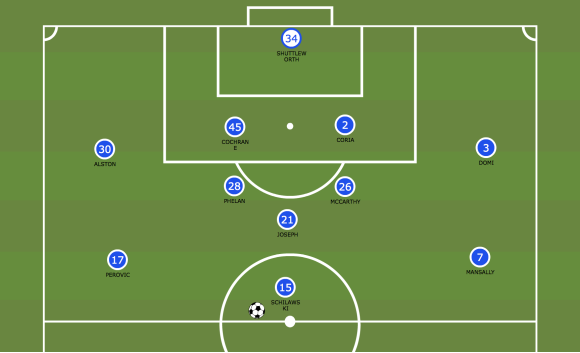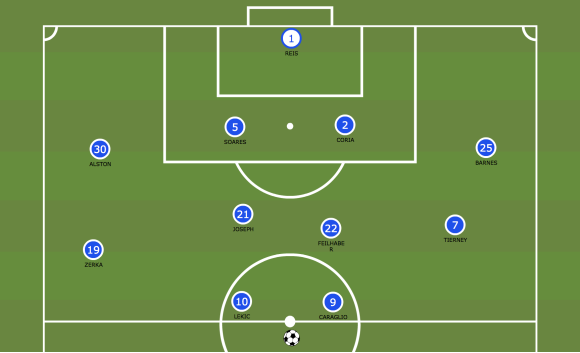In years past, the Revs have sat back, looked to absorb pressure, while hoping to catch the opposition on the counter. Coupled with the lack of overall skill on the team, this led to an endless procession of balls hoofed down the field.The Revs were starting every match off on the back foot.
This season, it has been Heaps’ habit to say that he wants to play from the front foot. I’ve been slightly critical of Heaps and his statements surrounding high-pressure, attacking soccer. It’s a great thing to say the club will play an exciting brand of soccer, the execution is something entirely different.
Due to injuries, Stephen McCarthy’s red card, and perhaps a bit of an adjustment period, the Revs never quite lived up to their manager’s billing in their first two matches. Their last two matches, both victories, have shown a team looking to keep the pressure on their opposition and win the ball in more dangerous positions.
The passing that the Revs displayed in their match up with the Los Angeles Galaxy this past weekend put a lot around the league on notice. No longer are the Revs looking to large, brutish players to make themselves difficult for the other team to get around. Instead the team has a midfield made up of technical, quick players looking to link up with their teammates constantly. The impressive Clyde Simms always puts himself in a position to be useful for his teammates and his famous 44 passes completed out of 46 passes attempted shows just that.
A bright attacking game can also be brought about through an aggressive defensive strategy. The inclusion of Ryan Guy was surprising to many who would have never considered the diminutive wing midfielder as an option up front. This move turned out to be a stroke of genius from the inexperienced Heaps. Guy’s aggressive play set the tone for the rest of the team. His constant harassment of the Galaxy’s shaky back line allowed the Revs defense to keep a high line themselves and squeeze the space that the Galaxy’s midfield was allowed to play.
Conclusion
Jay Heaps showed his ability as a tactician in LA this past weekend. Being able to spring a surprise on an opponent while still keeping your team in a shape that allows them to play their game is a talent not many rookie managers possess. Heaps has built a team capable of pressing the opposition on the pitch and they will continue to win balls in positive areas. He has also shown a great ability to build fantastic team spirit. All of the new pieces seem excited to play for him. Next up for Heaps on his coaching adventure will be to see how he deals with adversity.
